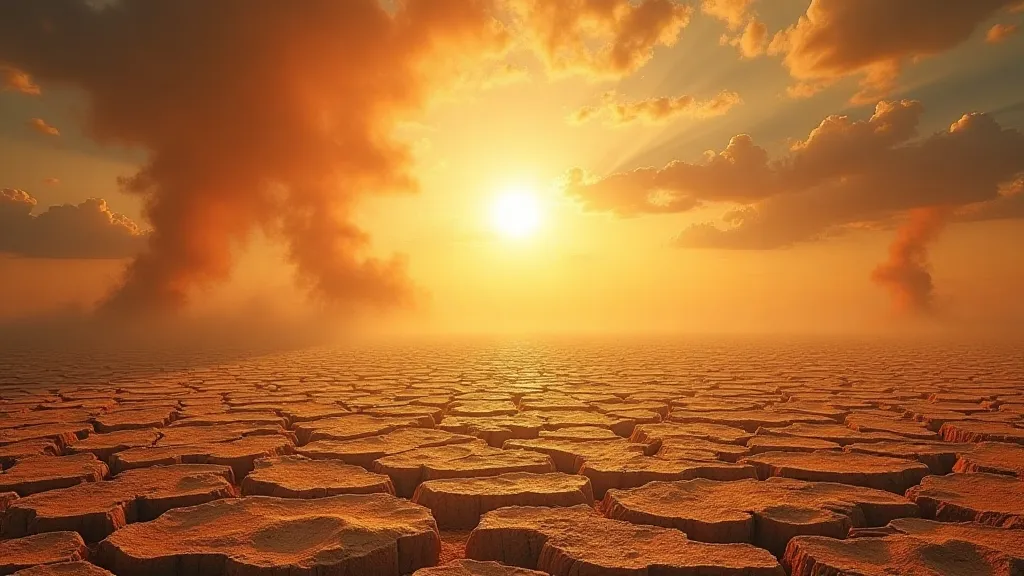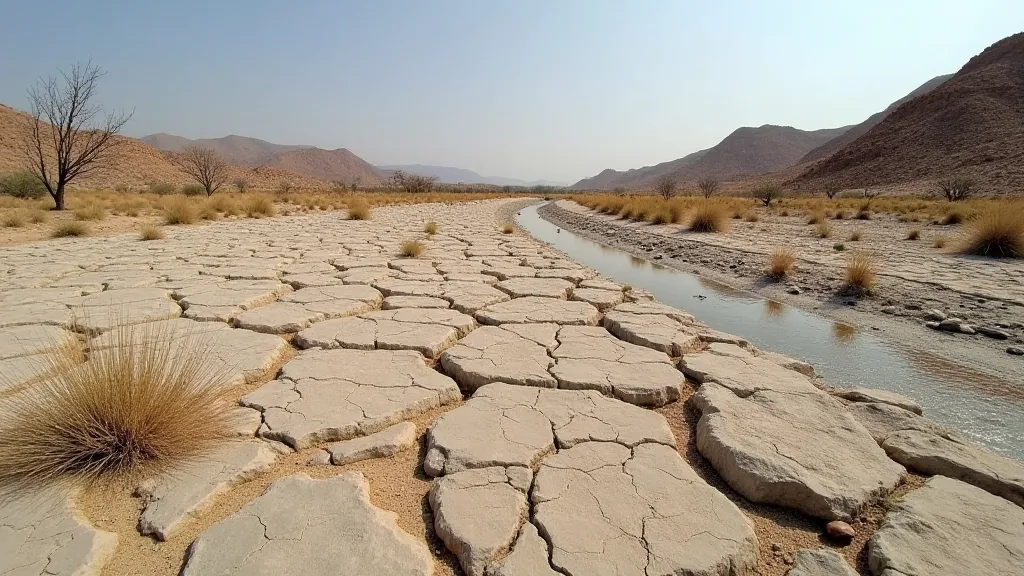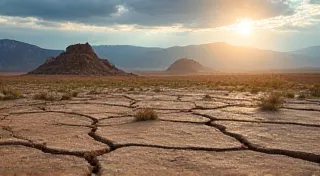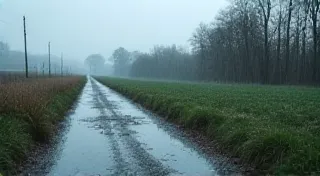Comparing Historical Droughts with Modern Climate Models
Understanding past weather events, particularly droughts, offers invaluable insights for improving our ability to predict future climate conditions. Climate models, powerful tools for simulating Earth’s climate system, are constantly being refined. One of the most critical ways to assess and improve these models is to compare their output with documented historical data. This article explores how analyzing past droughts serves as a vital check on the accuracy and reliability of modern climate models, specifically focusing on their ability to reproduce past climate conditions and predict future drought risks. The impacts of historical drought events have been documented throughout history, sometimes captured in unexpected places – even within the meticulous records of ancient cartographers, as revealed in articles like “The Cartographer's Grief: When Monsoon Failure Painted Landscapes of Despair in Mughal India."
The Value of Historical Drought Data
Historical weather records, though often incomplete, provide a tangible record of past climate variability. Droughts, in particular, leave a distinct mark on the landscape and human societies. Records can come from a variety of sources: tree ring analysis (dendroclimatology), sediment cores, historical documents (crop failure reports, water management records), and, increasingly, instrumental weather data that extends back centuries in some regions. These records provide a crucial benchmark against which climate models can be tested. The sheer scale of historical weather events, and their recurring nature, underscores the need for robust predictive models. For instance, understanding the intensity of past hurricane seasons, such as the record-breaking year of “The 1953 Atlantic Hurricane Season: A Record-Breaking Year, provides valuable context for future storm preparedness and demonstrates the interconnectedness of various climate hazards.
The inherent value lies in the ability to see if a climate model can "reproduce" past drought conditions – can it simulate the timing, severity, and spatial extent of droughts that *actually* occurred? If a model consistently fails to reproduce known drought events, it raises serious questions about its reliability in projecting future climate change and associated risks. The consequences of inaccurate predictions can be devastating, impacting agriculture, water resources, and human health, emphasizing the critical importance of model validation and refinement.

How Climate Models are Validated
The process of validation is multi-faceted. Scientists typically run climate models using past forcing data – information about solar radiation, volcanic eruptions, greenhouse gas concentrations, and other factors that influenced the climate. The model’s output is then compared with historical weather records, including measures of precipitation, temperature, and soil moisture, which are key indicators of drought. The challenges involved in this process are immense, requiring sophisticated statistical techniques and a deep understanding of climate dynamics. Sometimes, even paleoclimate research, reconstructing past climates through proxies like ice cores and sediment layers, can reveal surprising connections and force a reevaluation of our understanding of the climate system, further complicating model development.
Key metrics are used to evaluate the model's performance. These include:
- Correlation Coefficients: Measuring the statistical relationship between modeled and observed drought indices.
- Root Mean Square Error (RMSE): Quantifying the average difference between modeled and observed values.
- Spatial Patterns: Assessing whether the model accurately captures the geographic distribution of drought conditions.
- Timing of Events: Checking if the model correctly simulates the onset, peak, and duration of drought periods.
Discrepancies between the model’s output and historical data can highlight areas where the model needs improvement. These could be related to:
- Parameterizations: Simplified representations of complex processes within the climate system (e.g., cloud formation, land-atmosphere interactions).
- Forcing Data: Errors or uncertainties in the historical data used to drive the model.
- Model Physics: Fundamental assumptions about how the climate system operates.
The Challenge of Regional Detail and Extreme Events
While global climate models provide valuable insights, they often struggle to capture the nuances of regional climate variability. Droughts are often highly localized events, influenced by complex terrain and local weather patterns. This is where regional climate models become crucial. These models operate at a higher resolution, allowing them to better resolve local features and processes. The ability to understand the full extent of these events often requires a deep dive into historical accounts and even cultural records, which can sometimes offer surprising insights. For example, the devastation wrought by severe tornado outbreaks, often associated with drought conditions, have been meticulously recorded, emphasizing the interconnected nature of extreme weather—a topic explored in “Severe Tornado Outbreaks: A Historical Analysis."
By comparing regional climate model output with high-resolution historical drought data, scientists can fine-tune these models and improve their ability to predict drought risk at a more localized scale. However, it's not just about scale; the extreme nature of droughts – their intensity and duration – poses a significant challenge for even the most sophisticated models. Capturing these extreme events requires a deep understanding of the underlying processes that drive them, and a willingness to push the boundaries of climate modeling. Furthermore, the ability to decipher past events, especially those that left their mark on human civilization, mirrors the complex reconstruction and interpretation required to model modern climate trends, as illustrated by how paleoclimatology is even challenging the narratives within the “Whispers from the Ice Age: How Paleoclimatology is Rewriting the Epic of Gilgamesh."

Paleoclimate Insights and Long-Term Perspectives
The comparison of modern climate models with historical drought data doesn's exist in a vacuum; it's deeply rooted in a larger effort to reconstruct past climates and understand long-term climate trends. Paleoclimate research, which involves studying past climates using a variety of proxies (such as ice cores, tree rings, and sediment layers), provides crucial context for interpreting modern climate change. Examining records from periods even further back in time, such as the Ice Age, reveals surprising connections and challenges our understanding of the climate system. These reconstructions not only provide a broader perspective on climate variability but also offer valuable data points for calibrating and validating modern climate models. For instance, understanding how drought patterns varied during past interglacial periods can provide insights into the long-term drivers of climate change and improve our ability to predict future trends.
Model Limitations and Future Directions
Despite significant advancements, climate models still face limitations. Representing complex feedback loops and non-linear processes remains a major challenge. For example, the interaction between drought, vegetation, and soil moisture can create a positive feedback loop, where drought leads to vegetation stress, which further reduces soil moisture and exacerbates the drought. Capturing these complex interactions accurately requires a deeper understanding of the underlying processes and a willingness to incorporate new data and techniques into climate models. Furthermore, the inherent uncertainties in historical data, particularly in regions with limited instrumental records, can significantly impact the accuracy of model validation. Addressing these limitations requires a multi-faceted approach, including improving data acquisition and processing techniques, developing more sophisticated modeling frameworks, and fostering collaboration between climate scientists, historians, and other experts.
Furthermore, the accuracy of historical data is often a limiting factor. Many historical records are incomplete or unreliable, making it difficult to assess the performance of climate models. Efforts to digitize and improve the quality of historical weather records are essential for advancing our understanding of past climates and improving the accuracy of climate models. The challenge of ensuring data integrity and reliability across different time periods and regions remains a significant hurdle in climate modeling.
Impacts and Adaptation Strategies
The ongoing effort to compare historical droughts with climate models has significant implications for future drought prediction. As models become more sophisticated and are validated against a wider range of historical events, their ability to accurately predict future drought risk will improve.
This, in turn, can inform:
- Water Resource Management: Allowing for better planning and allocation of water resources.
- Agricultural Planning: Helping farmers adapt their practices to minimize drought losses.
- Disaster Preparedness: Enabling communities to prepare for and mitigate the impacts of drought.
Understanding the full range of potential impacts, from agricultural losses to human health crises, requires a holistic approach that integrates climate modeling with social and economic assessments. Successfully adapting to future drought risks necessitates proactive measures, such as investing in drought-resistant crops, improving irrigation efficiency, and developing early warning systems.






